The first modern Brazilian Cruiser – The Almirante Tamandare is certainly not world famous not change history but it was certainy a brave leap forward for the only Navy in South America which produced its own warships, at least when they were still manageable. The Tamandare, started in 1885 was certainly a game changer for the Marinha do Brazil, as the first protected cruiser, modern cruiser, thrice as heavy as the largest ship out of the Rio de Janeiro Dyd. The name was not anecdotical. It was the third “Tamandaré” in service, after the ironclad of the same name (1865), discarded in 1878. She was named after Admiral Joaquim Marques Lisbon, Marquis of Tamandaré, Patron of the Navy.
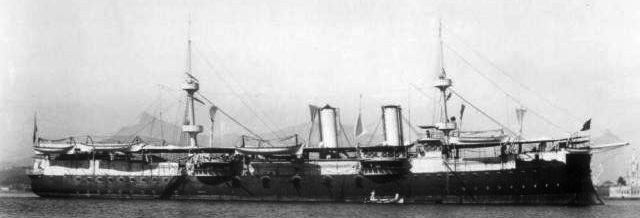
Tamandaré in 1910, after her second refit, photo by Marc Ferrez.
Development
In the 1880s, the Brazilian fleet comprised mixed sloops and Corvettes, Nictheroy (1862), Vital de Oliveria (1867), Trajano (1873), Guanabara (1877), Parnhayba (1878), Primoeiro de Marco (1881) and a single composite corvette, Almirante Barrozo (1882). They all came from Rio de Janeiro Dyd, giving the yard some experience in 1884 when it was decided to embark on a brand new cruiser design.
The Brazilian admiralty wanted this time a protected cruiser, like those just built by major fleets. However experience in steel construction went back to 1880 only, with the launch of Primeiro de Marco and Almirante Barrozo, both composite vessels, with a partial wooden hull. The new cruiser had to be entirely made of steel, with the characteristic armoured deck running above the engine rooms and ammunitions. She was designed on plans of CT João Cândido Brasil, built at a cost of 3.700.000 $, the largest ship ever designed in Brazil at that time.
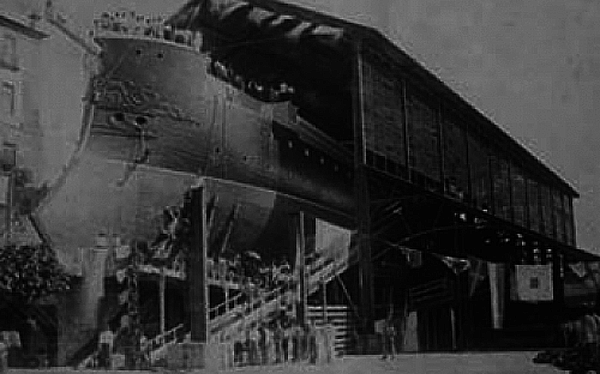
Le Launch of Tamandaré – Src: Marinha.ml
About Rio de Janeiro DyD
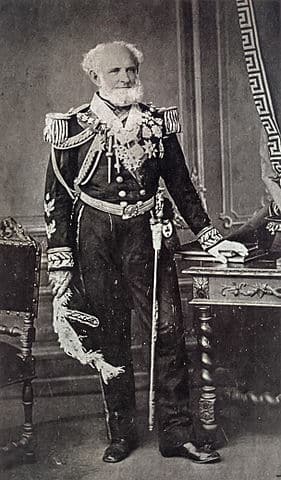
Design of the Tamandaré
The protected cruiser was relatively classic-looking, with several inspirations. The pronounced ram, raked stern, and relative tumblehome of the flanks took inspiration from Russian and French designs, as well as the broadside guns mounted in arc rails to provide them 45° angle of fire. At the same time as most authors agree, it drew more inspiration from the United States Navy protected cruisers USS Newark, San Francisco, and Philadelphia, as well as the German Irene class from the same generation. They all shared the basic concept inaugurated by HMS Leander.
In case it was planned, no photo ever saw the cruiser with any rigging on it. The cruiser displaced 3,938 long tonnes standard, and 4,537 tonnes fully loaded. Her hull measured 95,9 m overall (89,66 m between parallels), by 14,43 m in width, with a 7,06 m tall hull above water and 6,02-6,20 m draft below the waterline.
Propulsion
It was propelled by two British-built HTE (triple-expansion reciprocating steam engines) steam engines mated on two screw propellers. These machines were fed by seven cylindric Boilers (Coal-fired). This powerplant produced 7,000 bhp total, enough to reach 17 knots. In 1893 it was average to mediocre for a cruiser, even protected. The Tamandaré also carried 400 to 750 tons of coal in wartime. A crew of 400 sailors and officers was necessary to run the ship. This cruiser was given three masts and a bowsprit, all with armoured tops, for full rigging, described by Conways as a barque rigging. This was common at that time, less by distrust of steam engines and more to spare coal on transoceanic cruises as well as for concerns of sparing and maintaining properly the boilers, using salt water. A Brazilian source (http://brasilianafotografica.bn.br) said that this rigging was abandoned shortly after the cruiser was launched, while two combat masts were installed. The fighting tops also had a role for scanning the horizon and spotting water plumes from firing.
Armament
Since Brazil did not possesed any arsenal able to forge heavy marine cannons, the armament was ordered abroad, to the trusted Vickers Armstrong company. In total ten 6-in (152 mm/40) QF guns, a classic choice, two 4.7 in guns (120 mm/40) and ten 3-pdr or 47 mm/40 guns Hotchkiss autocannons deployed against torpedo boats. Although Conways don’t mentioned them, Portuguese sources also stated the cruiser was armed with 8 machine-guns and 5 torpedo tubes, without more specifications. By default it could be assumed one was located over the waterline in the prow and the other four in submerged tubes on the broadside, without much precision for their caliber, again assumed to be of 12 – 16 in (305 or 450 mm) caliber by the standards of the time. It is possible that the tubes were planned but not mounted on completion, and the machine guns too small to be noted in the official specs. These were troubled times indeed as the ship was seized during completion by insurgents, which was only effective in 1897.
The 6-in guns were placed in four sponsons on the main deck, to give them maximum traverse, and the remainder six, and the two 120 mm were in broadside ports. Lighter Hotchkiss guns were placed in upper positions on superstructures on the main deck and armoured tops. Without blueprints it’s difficult to assess this.
Armour
It was made of steel, without much precision on the method used or the fact it had hardened face or not. The casemates were protected by 3 inches (76 mm), the protective deck was 1.6 in thick (40,64 mm) (slopes ?), and the conning tower had walls of 2 inches (50,80 mm).
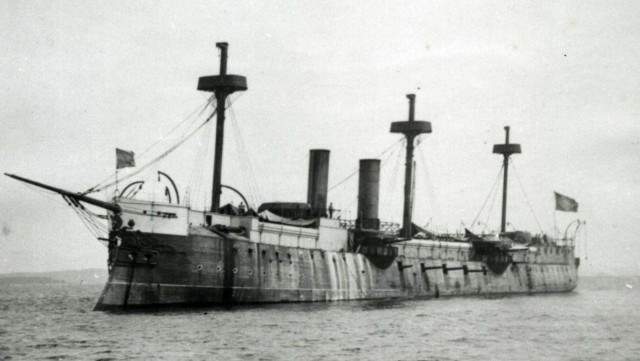
Specifications of Tamandaré (WW1) |
|
| Dimensions | 89.66 x 14.43 x 6.02m (295 x 47 x 20 ft) |
| Displacement | 3938 tonnes, 4,735 t FL |
| Crew | 400 |
| Propulsion | 2 shafts HTE, 7 Boilers, 7,500 bhp |
| Speed | 17 knots (24 km/h; xx mph) |
| Range | Estimated 4000 nm at 10 knots |
| Armament | 10 x 6-in/25 (152 mm), 2 x 4.7-in/40 (120 mm), 10 x 3-pdr/40 (47mm), see notes. |
| Armor | Protective Decks: 1.6 in, casemates 3 in, CT 2 in |
The Tamandaré in service (1893-1925)
Name
The cruiser was named after Admiral Joaquim Marques Lisbon, Marquis of Tamandaré, and Patron of the Navy. The other Brazilian shipsn to bear this name were a Central Battery Battleship from 1865 and a former brooklyn class cruiser, C-12 from 1936. Its first commander, Frederico Guilherme Lorena became one of the leaders of an insurrection, the great 1891-1894 Brazilian fleet revolt.
The ship was ot yet completed it was used in the revolt indeed, hit by Forts of Rio in Guanabara Bay and the damage had to be repaired after the insurrection. Admiral Tamandaré therefore was not incorporated into the Brazilian Squadron until 1897, in a very different configuration from that designed by its then-Captain Lieutenant Brazil a decade ago.
However it seems Admiral Tamandaré asked Navy Minister Eduardo Wandenkolk (1838 – 1902), according to the newspaper O Paiz for the cruiser to be named Admiral Cochrane.
Tamandaré was launched on March 20, 1890 with the presence of Deodoro da Fonseca (1827 – 1892), ministers and other authorities. 1891 – Captain Frederico Guilherme Lorena commanded the ship while she was still in completion, not yet commissioned. Frigate Captain João Francisco Velho Junior later provisionally commanded the Cruiser in 1892 and The Minister of the Navy urged completion in order for the ship to be ready to participate and represent Brazil at the opening of the Chicago exposition. In 1893 there was controversy about replacement on the original masts of the Tamandaré and that year, the main artillery of casemate batteries were mounted, the steam engines were tested. As soon as she “was ready”, the rebels took her for immediate use.
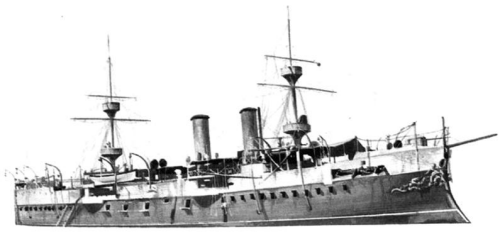
Another photo as built (unknown source, from navypedia) showing the flush deck and two colors, black hull and white superstructures of the ship, decorated prow.
At that time, she was not yed commissioned and this has spanned for eight years, the keel being laid down in 1885, the hull launched five years later, but official completion dragging on for three more years. Indeed the “Revolta da Armada”, the great insurrection of the fleet caused these delays. Some words about it:
In November 1891, the newly elected President of Brazil, Marshal Deodoro da Fonseca, in the midst of an institutional crisis doubled by a serious economic crisis, failed to negotiate with the opposition, and ordered the Congress to be closed. Some ships of the fleet in Guanabara Bay under Admiral Custódio de Melo, openly rioted, threatening to bombard Rio de Janeiro. To avoid this and at large a civil war, Marshal Deodoro resigned as President of the Republic. With this, only nine months after his investiture, Vice President Floriano Peixoto took office by 1892 but as the new constitution ensured, a new election would have to take place. This however, was not going to happen and the opposition soon accused Floriano to be illegally at the head of the nation.
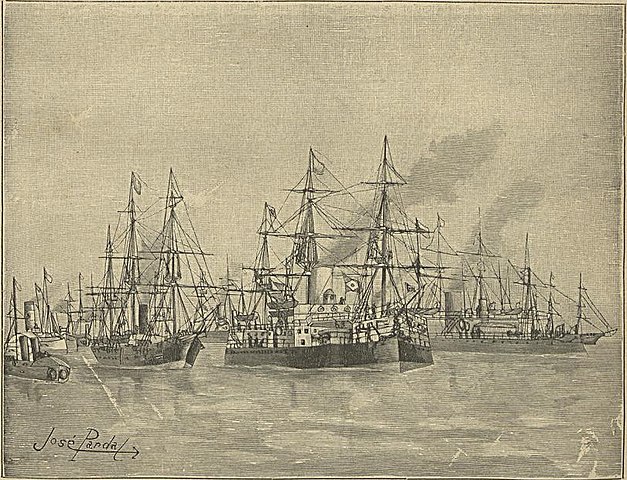
The Rebel fleet sailing to Rio, among which was the Tamandaré
By March 1892, thirteen generals sent a Manifest Letter to the new President of the Republic, Floriano Peixoto, calling for new presidential elections, but the movement was repressed and the leaders arrested. In September 6, 1893 Rear Admiral Custódio José de Melo declared that a grave act that demanded reaction. The group of senior naval officers openly rebelled, demanding elections, such as Admiral Saldanha da Gama, Eduardo Wandenkolk and Custódio de Melo, former Navy minister, and candidate for Floriano’s succession. This was also a reflexion of the Navy’s lesser political prestige compared to the Army’s, but army officers and Royalists also joined the rebellion.
As the rebellion received little support from Rio de Janeiro, on September 13 the fleet opened fire with the army’s forts, including Almirante Tamandaré. This degenerated in a vicious battle at Ponta da Armação, Niterói, against about 3,000 men of the battalions of the Republic and National Guard. Rio’s governor José Tomás da Porciúncula tried to move the capital to the city of Niterói, called Petrópolis in 1894. However the rebellion stood no chance of victory in Guanabara Bay, and headed south, marine troops landing at Desterro (present-day Florianópolis). In January 1894, a USN observer officer climbed on board the Tamandaré, finding her “abundantly supplied with food and ammo”, for a prolongated siege.
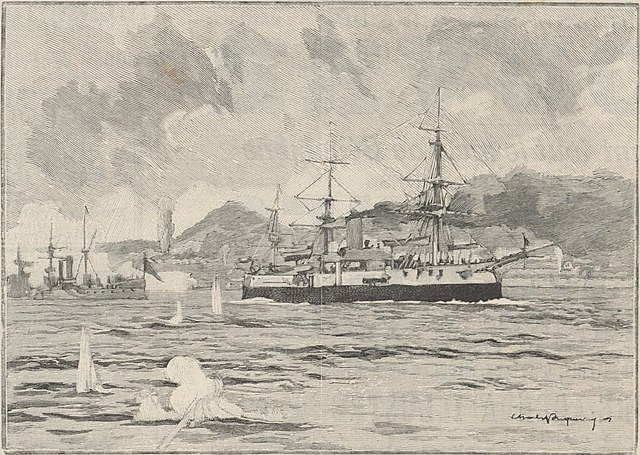
The ironclad Aquidaban and other ships of the rebel fleet shelling the Army’s forts of Rio de Janeiro
However in the end, the President, supported by the Army and Paulista Republican Party, put an end to the rebellion in March 1894. He hastily acquired, through an intermediary, the American businessman and banker Charles Ranlett Flint, USN warships to create the so-called “paper fleet”. This Republican fleet, also called the governor’s “Flint Squadron” traveled from New York Harbor to Guanabara Bay manned by US mercenaries to intimidate the rebels, and so in March 1894 the rebellion was over, Floriano Peixoto’s earning the nickname of “Iron Marshal”. We will speak again of the “Flint’s fleet”, which comprised the Nictheroy, Andrada and Piratinin, all armed with the brand new USN “secret weapon”, dynamite guns, and a ragtag added later of seven small monitors, gunboats and auxiliaries. The latter two had to be modified in Recife before being accepted by the government.
After these events, the crews were and moreover officers went into scrutiny to ensure loyalty. At an unknown date, probably before WW1, the cruiser was taken in hands for a modernization, as shown by photos; The original three masts were replaced by two, but it seems the powerplant remained unchanged as the funnels stayed identical. As for the armament, it’s difficult to see any changes also, as shown by photos.
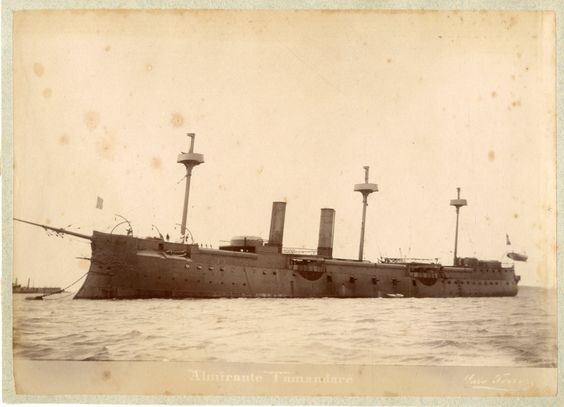
Abother photo by Marc Ferrez, showing the Tamandaré before mopdernization, but without her rigging, so after the 1894 revolt. The upper section of the masts had been removed leaving only the fighting tops (from pinterest). The photo is on sale at EBay.
The cruiser Tamandaré in 1894, after the revolt, was occupied by government toops, which appointed Theotônio Coelho Cerqueira Carvalho as Captain. In 1897 the cruiser was reformed, and modernized with two modern combat masts. Ventilation was also changed, with new metallic fans. The main battery was also removed. Many shortcomings remained and the ship spent the remainder of her active life at anchor in the port of Rio de Janeiro, seeing two or three successive commissions.
By 1901-1902 Tamandaré Served as the Marine Guards headquarters and in 1906 up to 1914 as the headquarters of several Professional Schools. Due to her large size, the cruiser was used as floating barracks for cadets and, later, became the headquarters for the naval academy, a first experience for future officers of the Brazilian Navy gathering several specialization courses for officers and sailors alike. In 1906, the Admiral the Cruiser became the HQ of the Artillery School, as well as the school for other specialties such as the Helmsmen, sounders, signalers and telegraphists.
In 1913, July 21 and, until August 14, she was docked at Guanabara Dike of Cobras Island, to replacing 145 brass sheets from her hull bottom. By the Notice No. 2612, 16 August 1913, she was made a provisional barrack for the Grumetes School, formerly on the cruiser Andrada. A total of 115 new housing cabins from the Rio de Janeiro were installed. At that time the Tamandaré was officially the main Barzilian School Cruiser. In 1914 she still served as Headquarters for the naval School off the Island of the Hoes in Guanabara Bay. However she was then placed out of commissioned and needed repairs. By 1915, December 27, she was eventually discharged from service by Notice No. 4525, discarded, and stricken. The hull however was not apparently broken up until 1925 according to Conway’s.
Read More/Src:
Gardiner, Robert, ed. (1979) Conway’s all the world fighting ships 1860-1905
Close Encounters of Empire: Writing the Cultural History of U.S.-Latin America
//www.infoescola.com/historia/revolta-da-armada/
//pt.wikipedia.org/wiki/Cruzador_Protegido_Tamandar%C3%A9
//www.naval.com.br/ngb/T/T002/T002.htm
//www.navypedia.org/ships/brazil/br_cr_tamandare.htm
//pt.wikipedia.org/wiki/Revolta_da_Armada
//brasilianafotografica.bn.br/?p=10694

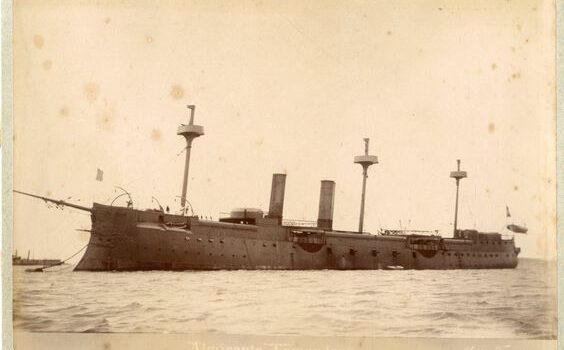

 Latest Facebook Entry -
Latest Facebook Entry -  X(Tweeter) Naval Encyclopedia's deck archive
X(Tweeter) Naval Encyclopedia's deck archive Instagram (@navalencyc)
Instagram (@navalencyc)





 French Navy
French Navy Royal Navy
Royal Navy Russian Navy
Russian Navy Armada Espanola
Armada Espanola Austrian Navy
Austrian Navy K.u.K. Kriegsmarine
K.u.K. Kriegsmarine Dansk Marine
Dansk Marine Nautiko Hellenon
Nautiko Hellenon Koninklije Marine 1870
Koninklije Marine 1870 Marinha do Brasil
Marinha do Brasil Osmanlı Donanması
Osmanlı Donanması Marina Do Peru
Marina Do Peru Marinha do Portugal
Marinha do Portugal Regia Marina 1870
Regia Marina 1870 Nihhon Kaigun 1870
Nihhon Kaigun 1870 Preußische Marine 1870
Preußische Marine 1870 Russkiy Flot 1870
Russkiy Flot 1870 Svenska marinen
Svenska marinen Søværnet
Søværnet Union Navy
Union Navy Confederate Navy
Confederate Navy Armada de Argentina
Armada de Argentina Imperial Chinese Navy
Imperial Chinese Navy Marinha do Portugal
Marinha do Portugal Mexico
Mexico Kaiserliche Marine
Kaiserliche Marine 1898 US Navy
1898 US Navy Sovietskiy Flot
Sovietskiy Flot Royal Canadian Navy
Royal Canadian Navy Royal Australian Navy
Royal Australian Navy RNZN Fleet
RNZN Fleet Chinese Navy 1937
Chinese Navy 1937 Kriegsmarine
Kriegsmarine Chilean Navy
Chilean Navy Danish Navy
Danish Navy Finnish Navy
Finnish Navy Hellenic Navy
Hellenic Navy Polish Navy
Polish Navy Romanian Navy
Romanian Navy Turkish Navy
Turkish Navy Royal Yugoslav Navy
Royal Yugoslav Navy Royal Thai Navy
Royal Thai Navy Minor Navies
Minor Navies Albania
Albania Austria
Austria Belgium
Belgium Columbia
Columbia Costa Rica
Costa Rica Cuba
Cuba Czechoslovakia
Czechoslovakia Dominican Republic
Dominican Republic Haiti
Haiti Hungary
Hungary Honduras
Honduras Estonia
Estonia Iceland
Iceland Eire
Eire Equador
Equador Iran
Iran Iraq
Iraq Latvia
Latvia Liberia
Liberia Lithuania
Lithuania Mandchukuo
Mandchukuo Morocco
Morocco Nicaragua
Nicaragua Persia
Persia San Salvador
San Salvador Sarawak
Sarawak Uruguay
Uruguay Venezuela
Venezuela Zanzibar
Zanzibar Warsaw Pact Navies
Warsaw Pact Navies Bulgaria
Bulgaria Hungary
Hungary

 Bundesmarine
Bundesmarine Dutch Navy
Dutch Navy Hellenic Navy
Hellenic Navy Marina Militare
Marina Militare Yugoslav Navy
Yugoslav Navy Chinese Navy
Chinese Navy Indian Navy
Indian Navy Indonesian Navy
Indonesian Navy JMSDF
JMSDF North Korean Navy
North Korean Navy Pakistani Navy
Pakistani Navy Philippines Navy
Philippines Navy ROKN
ROKN Rep. of Singapore Navy
Rep. of Singapore Navy Taiwanese Navy
Taiwanese Navy IDF Navy
IDF Navy Saudi Navy
Saudi Navy Royal New Zealand Navy
Royal New Zealand Navy Egyptian Navy
Egyptian Navy South African Navy
South African Navy






























 Ukrainian Navy
Ukrainian Navy dbodesign
dbodesign